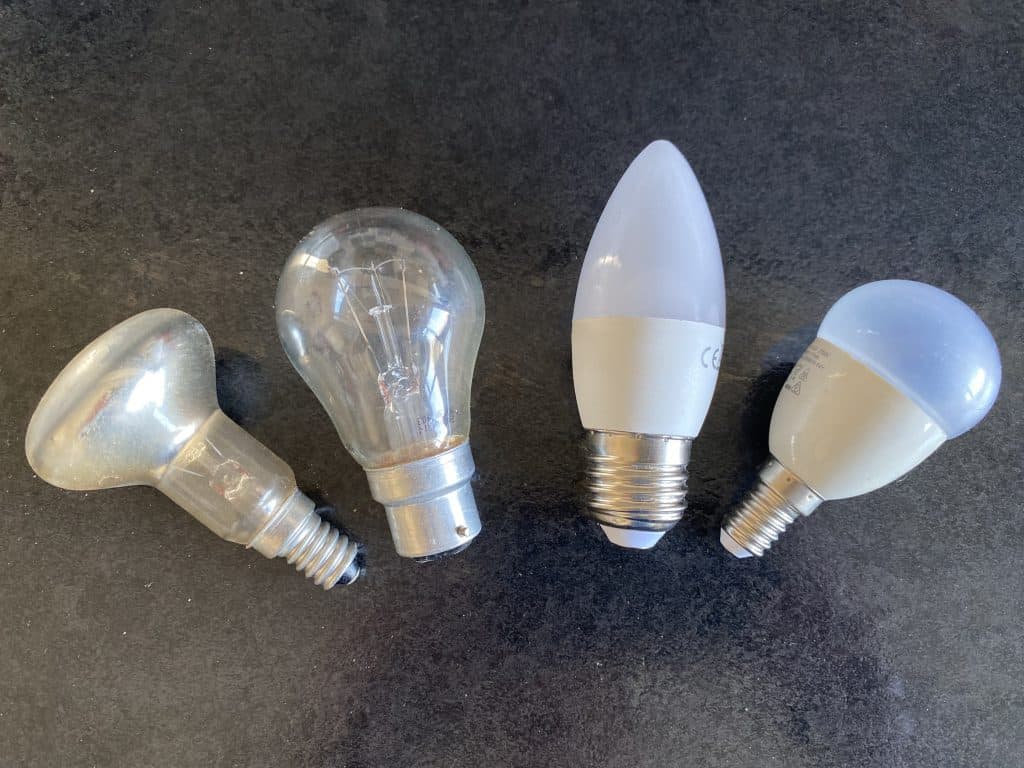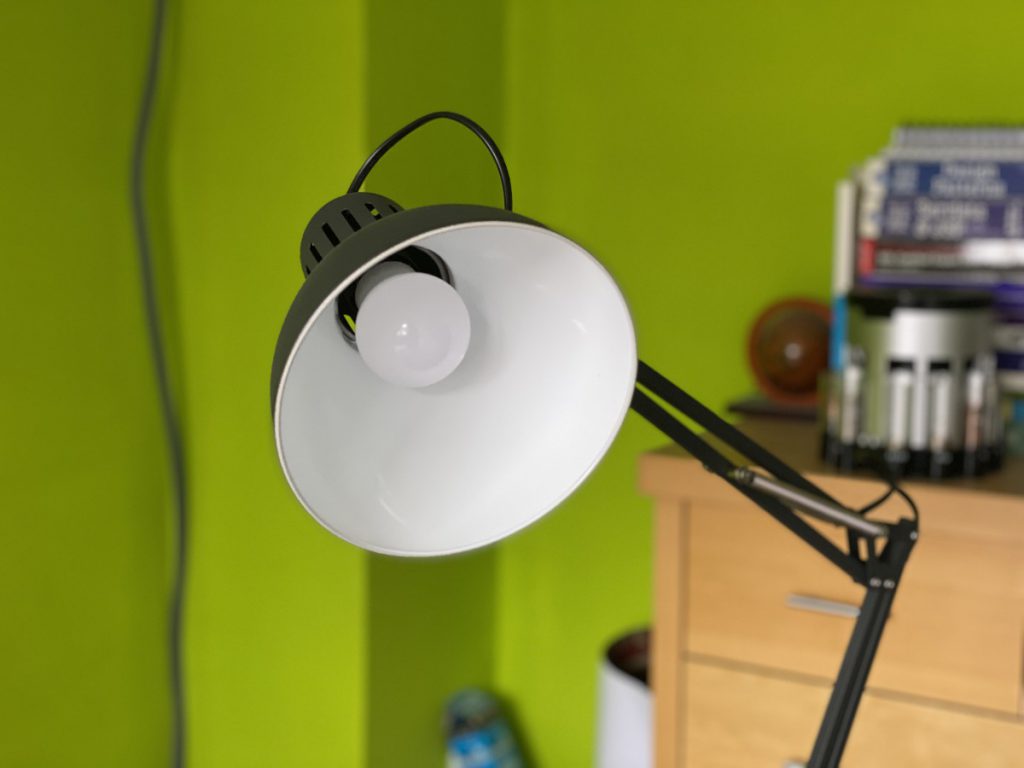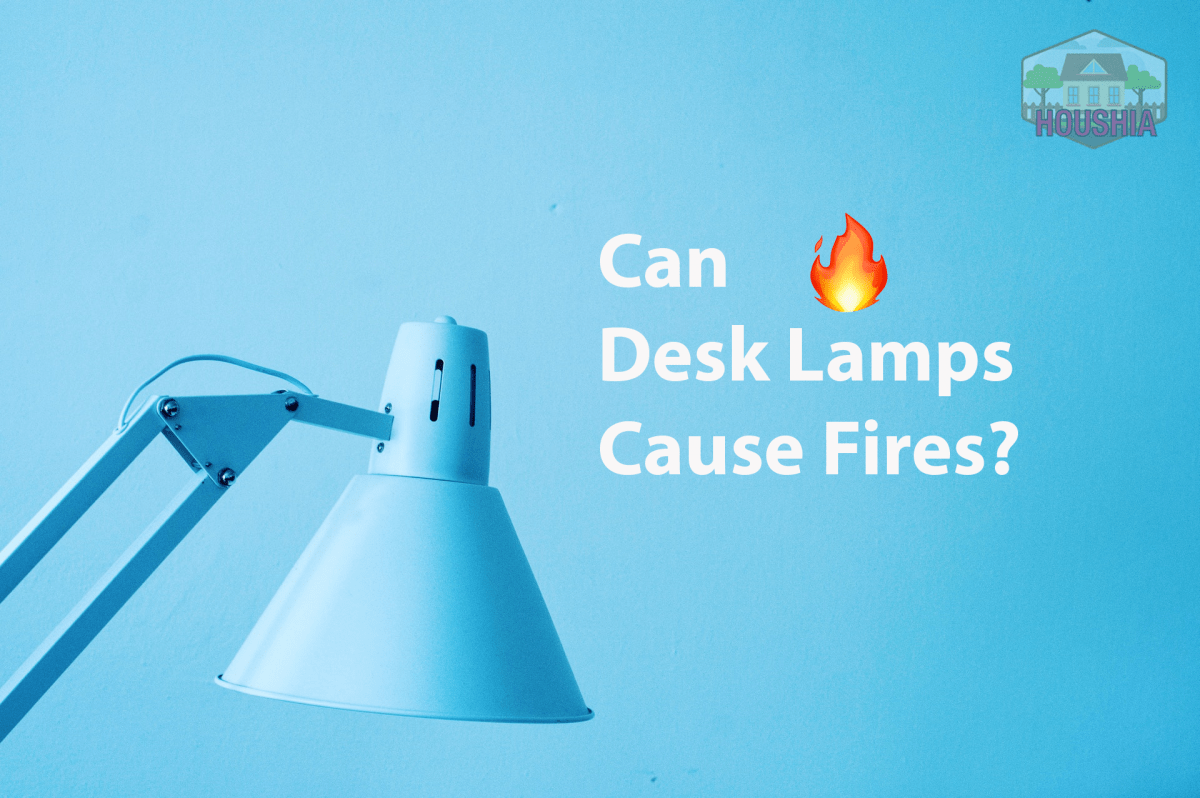Desk lamps and other light fixtures are among the five leading causes of house fires worldwide. According to the National Fire Protection Association (NFPA), overheated light fixtures lead the statistics among home fire property damage causes.
The light bulbs in these desk lamps are the primary reason fire can accidentally happen and spread. However, not all desk lamps can catch fire because there are different types, based on the type of bulbs they use. Let us go through which of them are the fire hazards!
Can Desk Lamps Cause Fire? Yes, desk lamps with incandescent and CFL bulbs tend to get so hot that they cause a fire if they touch things for too long. Halogen bulbs also explode due to overheating. LED bulbs are not likely to overheat and cause a fire. Poor wirings can also cause a fire.
It is important to know why Halogen and Incandescent Bulbs tend to be the most hazardous of all the types of bulbs and why people still continue to use it. Halogen bulbs, for example, are now common among desk lamps due to the amazing color temperature it gives, perfect for studying!
Most people also do not realize that CFL bulbs, on desk lamps, or anywhere else, are also prone to overheating. With this, it is high time we learn some basic tips to avoid having desk lamps overheat!
Desk Lamps With Incandescent Bulbs Are The Likeliest Suspect For House Fires
Manufacturers of desk lamps often use a variety of bulbs to illuminate our desks. Of the various types of bulbs that have been attached to lamps throughout the years, the incandescent bulbs are prone to be the most hazardous of them all.
This is primarily due to the fact that incandescent bulbs or lamps use filaments within a vacuum of space inside the glass shell to produce light. The filaments inside the incandescent bulb are heated through electricity, which consequently illuminates the whole bulb.
The fire hazardous nature of incandescent bulbs is due to a variety of reasons. Chief among these reasons is the fact that the filaments used by incandescent bulbs can heat up for more than 4,500 degrees Fahrenheit. The overheating of the filament could likely be caused by excessive use or continued use of the lamp itself.
If you look up the individual cases of house fires caused by incandescent desk lamps or bulbs, most of them are caused by desk lamps that are turned on and left for straight hours!
The Glass Protects The Lamp From Burning

You might be wondering how incandescent lamps work, whenever they don’t overheat and cook the house. Looking at the incandescent bulb that is on your desk lamp, or any other incandescent bulb for that matter, the filament burns within the glass shell.
The glass shell is either vacuum sealed or filled with inert gasses, allowing the filament to be the only one that burns. By preventing oxygen from being present inside the glass shell, the risk of burning the entire desk lamp is removed.
And yet despite the vacuum-sealed glass shell, incandescent desk lamps have still continuously become a significant player in house fire statistics. This is due to the overuse, excessive, and negligent usage of incandescent bulbs. Aside from that, a cracked incandescent bulb can even be easier to burn because it will allow oxygen to enter the supposed vacuum-tight glass shell.
When this happens, a fire could ignite on the lamp’s wirings, on the body of the lamp itself (plastic lamps could easily melt), or perhaps the bulb itself could explode.
The glass also is meant to protect flammable items from touching the hot filament inside. Without the glass shell, the filament could set anything on fire like curtains and placemats. Sadly, despite being intended to be resistant to overheating, incandescent glass shells have been recorded to overheat, typically glowing in a bright red color.
If combustible solids like cloth and paper touch the desk lamp’s glowing glass shell for a significantly long time, it could catch fire.
Fortunately Most Manufacturers Have Started To Phase Out Incandescent Bulbs
Not just incandescent desk lamps, but incandescent bulbs and light, in general, are starting to be phased out by manufacturers. Even incriminating to incandescent bulbs’ status, governments of the world have started to pass laws banning the usage of incandescent bulbs in households.
This is a testament to how prone incandescent is to catching fire. For example, the US has started to phase out incandescent bulbs since 2007, although it had been recently suspended in 2019.
Despite the phasing out of incandescent bulbs, there are still desk lamps out there in the market that are made up of incandescent bulbs. Even more saddening, most third-world countries have yet to make changes in the usage of incandescent bulbs.
Although this could be attributed to the weak economy that third world countries have after all incandescent bulbs are the cheapest of the types of bulbs.
Tips To Avoid Incandescent Bulbs Overheating
Now, if you cannot really avoid using incandescent bulbs or incandescent desk lamps, try to remember a few reminders so that you can minimize the risks of catching house fires. First off, do not overuse your incandescent desk lamps.
Allow it to rest and cool down for a few minutes for every three hours of continuous usage. Always check your incandescent bulbs and lamps’ condition, if you see cracks or any other signs of wear and tear on its shell, have it immediately replaced.
If your desk lamps’ wirings have been compromised or deteriorated, discard the desk lamp entirely because the wirings could start a fire. Do not put your desk lamps anywhere near combustible solids like paper, cloth, and plastics.
Replace your incandescent desk lamps the moment you notice signs of defect such as flickering, buzzing, and humming within the bulb. Lastly, do not use your incandescent bulbs beyond their expected life, which is around 1,500 to 2,000 hours.
Desk Lamps With Halogen Bulbs Are Even More Dangerous!
Desk lamps may also use halogen bulbs, which are also prone to house fires. Halogen bulbs have been recorded to explode when used excessively for continuous hours. This is despite the fact that they generally do not burn as hot as incandescent bulbs. Nevertheless, halogen bulbs are still hazardous if used negligently.
Despite the infamy of halogen bulbs, halogen desk lamps are becoming more and more popular with consumers. This is most likely since halogen lamps produce a more vibrant color with increased brightness. You get the color as vibrant as LED lamps while being as bright as CFL.
Tips To Avoid Halogen Bulbs Causing Fire
Similar to how you should use an incandescent desk lamp, always secure halogen desk lamps away from combustible solids. So in the unfortunate event that your halogen desk lamp does explode, it won’t light up anything on fire. Avoid having the desk lamp fall or break near carpets, drapes, and curtains.
Do not push your halogen bulbs past their expected life of 2,000 to 2,500 hours; always check the label. Although halogen bulbs do not necessarily heat up as much as incandescent lamps, refrain from using the lamp for straight hours. If you use your desk lamp for studying, turn off the desk lamp whenever you take breaks. This will allow the bulb and the quartz glass to cool down.
CFL Lamps Can Also Be A Fire Hazard
CFL desk lamps are not necessarily a fire hazard because they do not get really hot, at least not as much as incandescent and halogen bulbs. CFL are generally really good desk lamps because they are relatively efficient, bright, and durable. Regardless, CFL desk lamps may still be a fire hazard, especially when used negligently.
CFL desk lamps can most likely be a fire hazard if the bulb itself is defective. A defective CFL bulb might not be able to sustain the surge of electricity. Aside from defective bulbs, it may also be dangerous to use a CFL desk lamp for long periods of time.
LED Lamps Will Less Likely Overheat

LED lamps are least likely suspects for house fires. This is because LED bulbs do not use filaments to illuminate the glass shell. Instead of filaments, LED bulbs illuminate by passing electric currents through diodes. In this manner, there is no overheating that could cause fire, melting, or even bulb explosions!
Looking at an LED light, you will notice that it does not get hot, nor does it produce a “hot glow.” In fact, an LED bulb will only heat up around 140 to 212 degrees Fahrenheit. This “heat” is nothing when compared to how hot incandescent bulbs get, which is around 3,600 to 4,500 degrees Fahrenheit. You won’t be worrying too much about house fires if you are using LED desk lamps.
Conclusion
To summarize things up, only incandescent and halogen desk lamps pose a threat in causing house fires. To avoid them catching up on fire, always use them with extreme caution.
Do not allow combustible solids from touching them. Also, do not use them for long periods of time without giving them an opportunity to cool down. If you have CFL and LED desk lamps, the only concern you have is the wirings.
P.S.
That’s it for this article. I hope you enjoyed reading it and if you think it might be useful for someone else then please share it on social media, email or your own website! It really encourages us to write more content and grow the site!
If you’re interested in reading more about smart light, smart garages and smart homes checkout some of the other houshia categories including:

